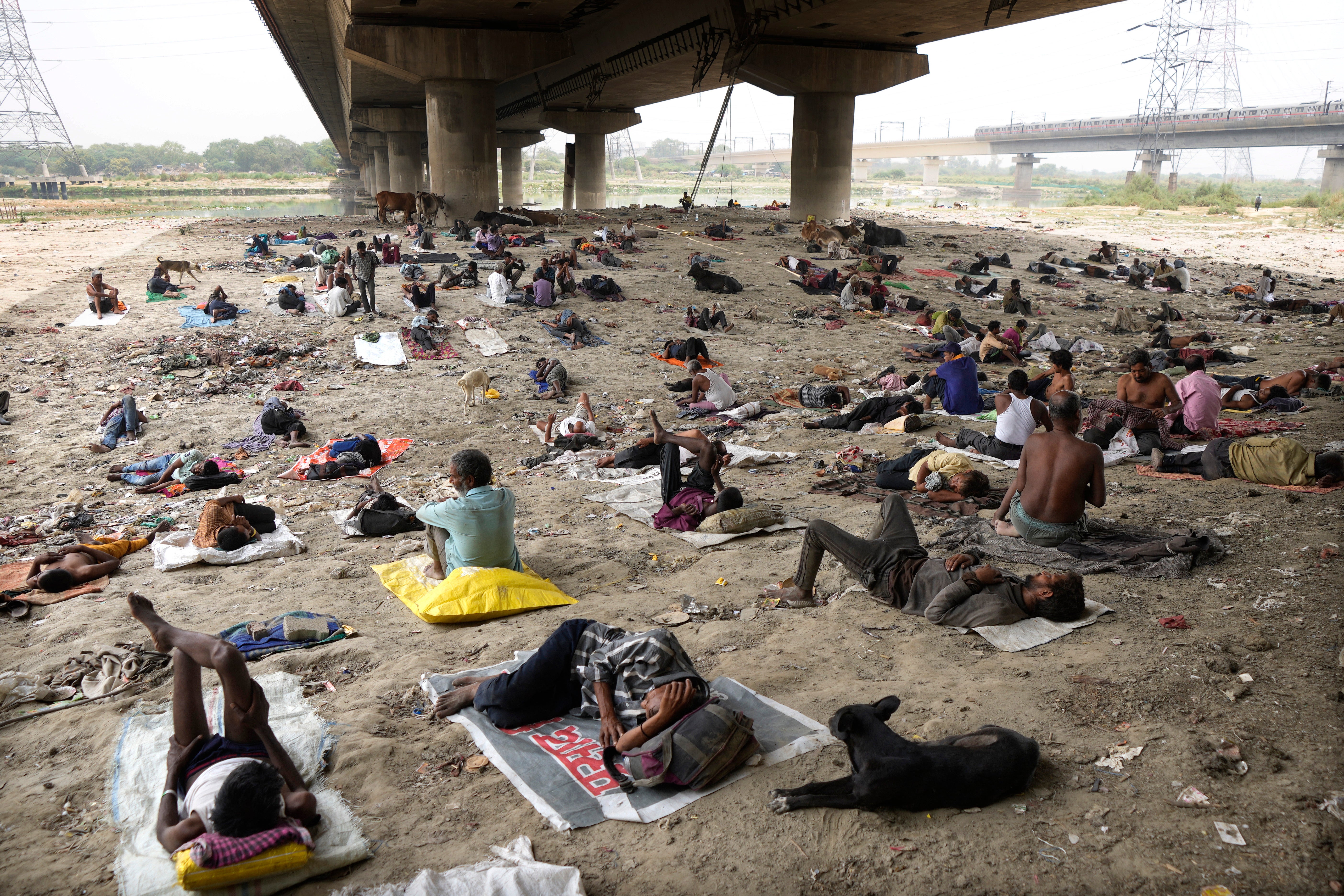Fears for Asia’s summer after recent ‘monster’ heatwave: ‘Climate emergency is here’
‘The climate emergency is here for this region’
A “monster” Asian heatwave which shattered temperature records in more than a dozen countries is an early warning sign of “what may come if action is not taken”, scientific experts said.
Extremely high temperatures have swept across large parts of south and southeast Asia in recent weeks including India, China, Thailand and Laos.
Ultimately, one-third of the global population suffered under crippling heat that is being driven by the climate crisis.
Scientists are now sounding the alarm that the April heatwave is a “warning sign” ahead of more potential brutal heat this summer.
“Human-induced climate change is the major cause of the growing number and ferocity of heatwaves we’re seeing across Asia,” said climate and environment specialist Deepshikha Sharma at the International Centre for Integrated Mountain Development (ICIMOD).
“These signal to the fact that the climate emergency is here for this region.”
The extreme temperatures have already resulted in deaths in India and Thailand, along with school closures and loss of productivity in both countries.
In mid-April, the temperature hit a scorching 44.6 degrees Celsius in Thailand’s western province of Tak, the hottest temperature ever recorded in the country. Meanwhile, Laos broke its all-time high temperature record two days in a row.
Extreme temperatures were also noted in Dhaka, Bangladesh at 41C; 45C in Prayagraj, India; and 44C in Kalewa, Myanmar.
In China, Changsha and Fuzhou have seen their warmest April temperatures on record. Zhejiang province broke the record for highest April temperature.

On 23 April, nine cities in Pakistan recorded temperatures of 40C and above.
The threat of extreme temperatures this summer is a concern across many countries in Asia.
India’s state meteorological bureau said the country is expected to have a hotter 2023, after a devastating, record-breaking heatwave last year. India has already experienced its warmest February on record this year.
Scientists have said the world could breach a new average temperature record in 2023 or 2024, fuelled by the climate crisis and the return of an El Nino weather phenomenon linked to warming of the Pacific ocean.
The last eight years have been the warmest on record despite some of them experiencing a La Nina - the colder counterpart of El Nino.
“All climate models show that these spikes in heat are going to increase in frequency and intensity across South Asia,” said Abid Hussain, senior economist and food systems specialist at ICIMOD.
“Such heatwaves will impact 2 billion people either directly, in terms of heat impacts on health and work, or indirectly in terms of glacier melt, floods, water variability, erratic rainfall and landslides.”
The Hindu-Kush Himalayan region across Central and South Asia has the third-largest body of frozen water in the world and is warming at twice the global average, experts warn.
It means glaciers are melting faster and making water flow into rivers unpredictable. As temperatures continue to rise, glaciers get smaller, leading to water scarcity and food insecurity in the region, as well as increasing hazards such as flash floods.
Last year’s devastating climate-driven floods in Pakistan were exacerbated by the impact of melting glaciers making monsoon rains more erratic.
Also read: What caused Pakistan’s deadly floods? From melting glaciers to ‘monster’ monsoon
“Because of inadequate institutional and community capacity, most of these hazards are likely to turn into disasters,” warned Mr Hussain.
The melting of glaciers in the European Alps and Antarctic sea ice falling to its lowest extent on record are further evidence of the impact of climate crisis on the planet, ICIMOD experts point.
In the most optimistic scenario, limiting global warming to 1.5C, the region stands to lose one-third of its glaciers by 2100, creating huge risks for mountain communities, ecosystems, and nature, as well as a quarter of humanity downstream.
“It is urgent that we make rapid and drastic progress in emissions reductions and scale adaptation finance, and for a much greater impact in adaptation and disaster risk reduction measures to protect the people and ecosystems, whose vulnerabilities are increasing by the day through no fault of their own,” Ms Sharma says.
Join our commenting forum
Join thought-provoking conversations, follow other Independent readers and see their replies
Comments


Bookmark popover
Removed from bookmarks